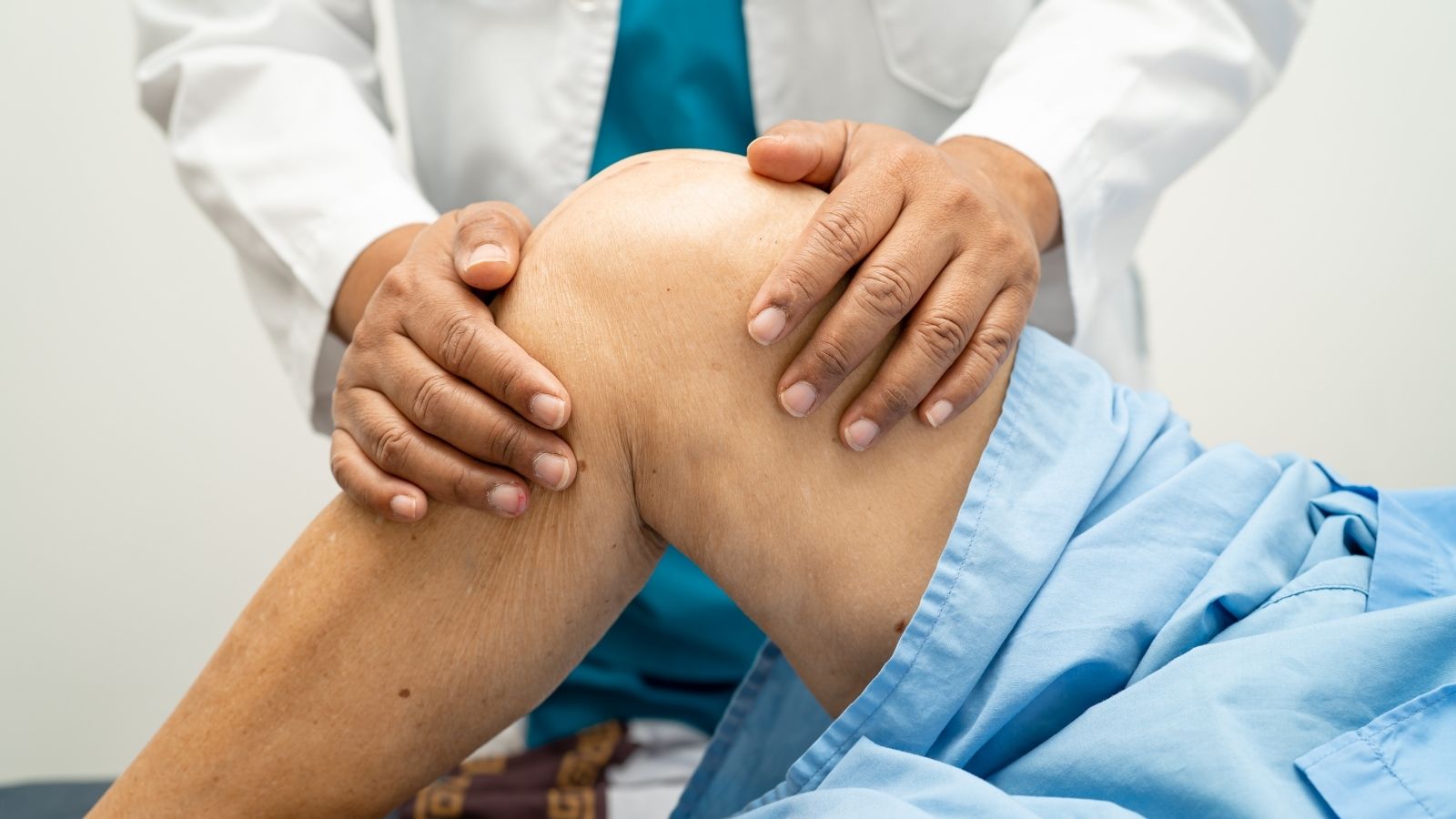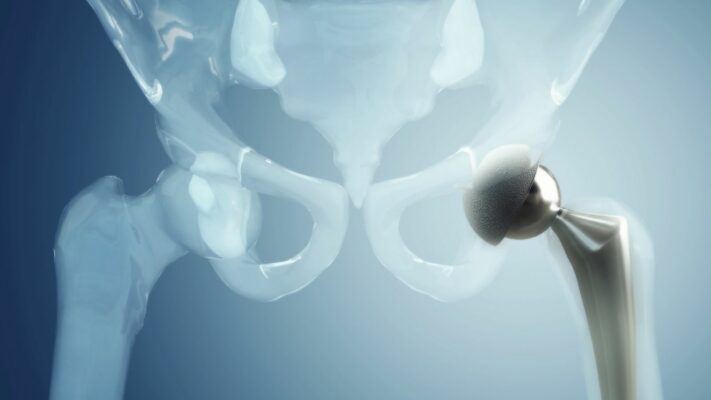Prof. Dr. Murat Demirel, one of the best orthopedic doctors performing hydrogel knee treatment (liquid knee prosthesis) in Ankara, offers modern and effective solutions for knee problems such as osteoarthritis and cartilage wear. Hydrogel knee treatment is an advanced method where a special gel is injected into the joint, reducing friction between cartilage surfaces, facilitating joint movement, and alleviating pain. Thanks to this treatment, patients can increase their mobility and improve their quality of life without surgery. Among the hospitals offering hydrogel knee treatment in Ankara, Prof. Dr. Demirel provides personalized treatment plans for each patient in centers with high hygiene standards and advanced medical equipment.
During the treatment process, Prof. Dr. Demirel provides detailed information to his patients and ensures a fast and safe recovery by giving post-treatment medical advice. He also provides transparent information about hydrogel knee treatment prices in Ankara, helping patients make informed decisions. To protect your knee health, reduce pain, and increase your freedom of movement, you can contact us now and book an appointment.
| Treatment Name | Hydrogel Knee Treatment (Liquid Knee Prosthesis) |
| Application Area | Knee joint (especially cartilage damage caused by osteoarthritis) |
| Purposes of Use | To reduce pain caused by knee osteoarthritis, increase joint mobility, and delay or avoid surgical intervention |
| Application Method | Injection of polyacrylamide hydrogel (e.g., Arthrosamid) into the knee joint; usually performed under local anesthesia in an outpatient setting. The procedure takes about 5–10 minutes and does not require hospitalization. |
| Type of Anesthesia | Local anesthesia or can be performed without anesthesia. |
| Mechanism of Action | The hydrogel forms a lubricating layer inside the joint cavity, reducing friction and relieving pain. It also helps protect cartilage tissue by regulating the balance of joint fluid. |
| Suitable Patient Profile | Patients with moderate to advanced knee osteoarthritis, those not suitable for surgery or unwilling to undergo surgery; success rates up to 80% have been reported especially in individuals under 70 years of age. |
| Contraindications | Active infection at the injection site, hemophilia, having undergone knee arthroscopy within the last 6 months, severe bone deformities, conditions such as rheumatoid arthritis. |
| Complications | Temporary pain or swelling at the injection site, rarely allergic reactions; serious side effects are rare. |
| Recovery Process | Patients can usually return to normal activities the same day after the procedure; full effect is usually seen within 4 weeks. |
| Effectiveness Duration | The hydrogel is not absorbed by the body and remains inside the joint for a long time; its effect may last between 6 months and 2 years depending on the patient. |
| Advantages | Non-surgical and minimally invasive method, quick application, long-lasting effect, low complication risk, and fast return to daily life for patients. |
| Alternative Methods | Hyaluronic acid injections, PRP (Platelet Rich Plasma), physiotherapy, NSAID use, total knee replacement surgery |
| Follow-Up Process | Short observation after the procedure; regular check-ups and physiotherapy support if necessary. |


Prof. Dr. Murat Demirel
Orthopedics and Traumatology Specialist
Orthopedics Specialist Prof. Dr. Murat Demirel was born in Ankara in 1974. He completed his primary education at Ankara Kavaklıdere Primary School and his secondary and high school education at Ankara Atatürk Anatolian High School. Dr. Demirel graduated from Ankara University Faculty of Medicine in 1998 and completed his residency in Orthopedics and Traumatology at Ankara Numune Training and Research Hospital, 1st Orthopedics and Traumatology Clinic, in 2004.
PhD
Ankara University Institute of Health Sciences
Specialization
Ankara Numune Training and Research Hospital, 1st Orthopedics Clinic
Medical School
Ankara University Faculty of Medicine
Yazı İçeriği
What is Hydrogel?
Hydrogel is a jelly-like, elastic and flexible polymer material with a high water content that makes it structurally very similar to living tissue. Thanks to these properties, when injected into the body, it is not perceived as a foreign substance. In medicine, it is used in contact lenses, wound healing, artificial tissue, and controlled drug delivery. In addition, hydrogel is effectively used in knee joint disorders as a liquid knee prosthesis.
What is Hydrogel Knee Treatment (Liquid Knee Prosthesis)? Ankara
Hydrogel knee treatment, also commonly known as liquid knee prosthesis, is performed by injecting the gel-like substance into the joint. This treatment is essentially a non-surgical knee procedure. Unlike other injections applied into the joint, hydrogel knee treatment can maintain its effectiveness for many years with a single application. For example, hyaluronic acid used in knee treatment is easily absorbed by the body, making its effect short-lived. Hydrogel, however, is not absorbed or eliminated by the body. By forming a cushion that prevents friction, it provides long-term ease of movement and reduces knee pain.
How Does Hydrogel Work?
Hydrogel (Liquid knee prosthesis), after being injected into the knee joint, acts by forming a layer on the joint similar to body fluids. This reduces the patient’s pain complaints and eliminates movement restriction in the knee joint.
How is Hydrogel Knee Treatment Performed?
Hydrogel knee treatment is performed by injecting the gel, known as liquid knee prosthesis, into the knee joint in a clinical setting under local anesthesia. The stages of this treatment are as follows:
- Diagnosis and Evaluation: The patient’s physical examination is performed to assess knee joint movement and pain status. The structure and fluid level of the joint are examined in detail using imaging methods such as ultrasound. Previous treatments and surgeries are also evaluated.
- Planning: After the necessary tests, the amount of hydrogel and the target area for the liquid knee prosthesis are planned.
- Application: The area is numbed with local anesthesia for the patient’s comfort. If there is excess fluid in the knee joint, it is drained before starting. Then, the appropriate amount of hydrogel is injected into the planned areas.
Contact us for detailed information and an appointment!
What Should Be Considered After Hydrogel Knee Treatment?
After hydrogel knee treatment, patients are observed for 20 minutes to evaluate any side effects related to the injected gel. The following points should be considered after the procedure:
- Some pain and swelling may occur at the injection site after the liquid knee prosthesis injection. This is normal once the effect of local anesthesia wears off. Pain can be easily managed with painkillers prescribed by the orthopedic specialist.
- Rest is especially recommended for the first 3 days.
- Avoid strenuous activities such as long walks and running.
- If necessary, physiotherapy programs should continue without interruption.
- Patients should attend regular check-ups on the dates specified by their doctor.
Who Can Receive Hydrogel Knee Treatment (Liquid Knee Prosthesis)?
Hydrogel knee treatment (Liquid knee prosthesis) is currently applied especially in patients with osteoarthritis and advanced cartilage damage, stage 4 cartilage damage, and in individuals whose overall health does not allow surgery.
Who Cannot Receive Hydrogel Knee Treatment (Liquid Knee Prosthesis)?
Hydrogel knee treatment (Liquid knee prosthesis) is not suitable for:
- Those with severe bone damage or deformities,
- Those with active infection in the knee or anywhere in the body,
- Patients with severe obesity,
- Those with artificial knee prosthesis or knee implants,
- Patients who underwent arthroscopic knee surgery within the last 6 months,
- Patients with rheumatoid arthritis,
- Elderly patients or those with poor general health,
- Patients with hemophilia or autoimmune diseases,
- Patients who can be treated with medication or PRP applications.
What Are the Advantages of Hydrogel Knee Treatment?
The advantages of hydrogel knee treatment include:
- It is a non-surgical procedure.
- The hydrogel used as a liquid knee prosthesis resembles joint fluids, making natural knee movements easier.
- It allows long-term use.
- Compared to other prosthesis types, the risk of infection is lower.
- The recovery period is shorter, and patients return to daily life faster.
How Long Does Hydrogel Knee Treatment Take to Show Effect?
Hydrogel knee treatment usually starts to take effect 4 weeks after the procedure. Full relief may take a little longer to be observed.
Does Hydrogel Knee Treatment Have Side Effects?
Rarely, pain, swelling, tingling, and movement restriction may occur at the site of hydrogel injection. Rare allergic reactions may also occur to the substances in the gel. The procedure must be performed by an Orthopedics and Traumatology Specialist, and any possible side effects should be reported to the doctor immediately.
Is Hydrogel Knee Treatment Safe?
Hydrogel knee treatment is considered a safe method. Many clinical studies have been conducted, and these studies support the safety of the treatment. Liquid knee prosthesis received the CE certificate from Europe in 2021 for knee osteoarthritis treatment. Hydrogel has been accepted as biocompatible. It has also been reported that liquid knee prosthesis is durable in long-term use and improves joint functions.
Contact us for detailed information and an appointment!
Frequently Asked Questions
How much does a knee fluid injection cost?
The price of knee fluid injections varies greatly depending on the type of material used (hyaluronic acid, hydrogel, PRP, etc.), its brand, and the clinic where it is applied. Therefore, giving an exact figure may be misleading. The most accurate information can be obtained after examination from your doctor or the center where you plan the treatment.
What is the lifespan of hydrogel?
The most important feature of hydrogel is that it is not absorbed by the body. This way, it provides permanent cushioning inside the joint. Studies show that the benefits of treatment last for several years. Although the duration of effect varies from person to person, it is a much longer-lasting option compared to other injections.
How long is hydrogel treatment effective?
Since hydrogel is not dissolved in the body, its effect can last for years. Clinical observations and studies show that patients experience relief for at least 3–5 years or even longer. The aim is long-term comfort with a single injection.
Is hydrogel treatment safe?
Yes, hydrogel treatment is a safe method. The material used is a gel that consists of 97.5% water and is compatible with body tissues. Thanks to this biocompatibility, the risk of allergic reactions or serious side effects is very low. When performed under sterile conditions, the risk of infection is also minimal.
What are the risks of hydrogel treatment?
There are no known serious harms of hydrogel treatment. As with any injection, temporary pain, swelling, or bruising at the injection site may occur. These effects usually disappear on their own within a few days. Serious complications such as infection are extremely rare.
Does the state cover knee injections?
The state (SGK) coverage for knee injections depends on the type of injection and certain medical conditions. It generally covers some standard treatments such as hyaluronic acid, while newer and more costly treatments like hydrogel are usually not reimbursed. For the latest information, consult your doctor.
What does hydrogel contain?
Hydrogel actually has a very simple structure. The majority, about 97.5%, is sterile water. The remaining 2.5% is polyacrylamide, a body-compatible substance that binds water to create the gel-like consistency.
What is the difference between hydrogel and hyaluronic acid?
The main difference is permanence. Hyaluronic acid mimics the natural fluid in the joint and provides lubrication, but it is gradually absorbed by the body within 6 months to 1 year. Hydrogel, on the other hand, is not dissolved, integrates with the joint tissue, and creates a permanent cushion, providing a much longer-lasting effect.
Is hydrogel treatment permanent?
The hydrogel substance itself remains permanent in the joint, but the treatment does not completely cure the underlying osteoarthritis. Its purpose is to eliminate friction and pain caused by worn cartilage for many years. It is an alternative to prosthesis surgery and provides long-term relief.
What is hydrogel combination step therapy?
This means not only applying hydrogel injection but also adopting a comprehensive approach tailored to the patient’s condition. It includes hydrogel application along with suitable exercise programs, weight control, physiotherapy, or other supportive treatments. The goal is to maximize the benefit of the treatment.
Which injection is best for knee fluid loss?
The “best injection” depends on the patient’s condition. In early-stage osteoarthritis and for temporary relief, hyaluronic acid is often used. If pain is accompanied by severe inflammation, cortisone may be considered. For patients seeking a permanent and long-term solution who do not want or are not suitable for surgery, hydrogel injection is one of the most effective options.




